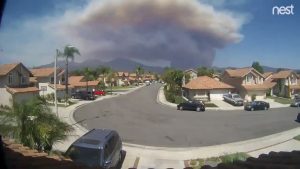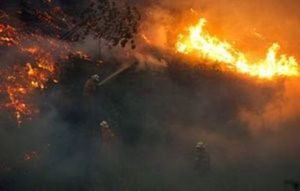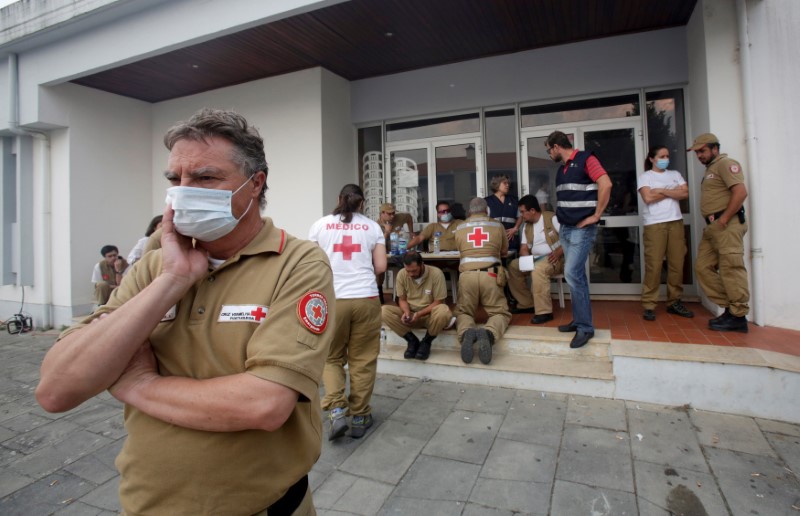
By Steve Gorman
LOS ANGELES (Reuters) – Storm clouds gathered over southern Oregon and northern California early on Wednesday, threatening to spark more wildfires with lightning strikes as emergency crews battled several deadly blazes, forecasters said.
The clouds carried little rain and offered little chance of a break from the bone-dry conditions plaguing the region, the National Weather Service said.
“Initial attack resources could be overwhelmed,” it added in a red flag announcement.
Elsewhere, crews made slow but steady progress against wildfires including one, called the Mendocino Complex, which has become largest in California’s history and killed one firefighter from Utah on Monday.
Emergency crews had managed to set up containment lines around almost two thirds the fire which has raged through the southern end of the Mendocino National Forest, the California Department of Forestry and Fire Protection (Cal Fire) said.
That fire has scorched 355,000 acres (144,000 hectares) and destroyed 265 structures, it added.
To the northeast, firefighters have been able to carve containment lines around 65 percent of the Carr Fire, which has killed three firefighters, four civilians and a utility worker and burned more than 1,500 structures. The Carr Fire has blackened 211,000 acres, Cal Fire said.
The heart of Yosemite National Park in California was reopened to the public on Tuesday after it was shut down for nearly three weeks due to the Ferguson Fire, which has caused two deaths. But smoke lingered in the air and a key route to the park’s best-known landmarks remained closed.
The 100,000-acre fire, which is about 150 miles (240 km) east of San Francisco, was 86 percent contained after igniting a month ago, authorities said.
(Additional reporting by Brendan O’Brien in Milwaukee; Editing by Andrew Heavens)







